Marketing at a growing tech company is hectic, it’s fast, and it’s an all hands on deck approach. The more you grow in terms of headcount, revenue, and reputation, the more the challenges start popping up to scale your processes while still holding on to the magic that made you successful in the first place.
Tech companies exhibit innovation in product, services, and company culture (at least the good ones do). But they don’t always have forward-thinking processes to match, especially around content access and usage across the growing organization.
If you’re in marketing or media at a tech company, ask yourself: does the way we use content more resemble how things were done 5 years ago, or how we’ll be doing things 5 years from now?
Digital asset management is a practice and a solution that we’ll still be using 5 years from now. Here are our top 5 uses of DAM specifically for tech companies:
1. Content marketing
Content marketing is the number one technique in marketing this year, with more than half of tech brands planning to invest more in branded visual content than they did in 2019. Which means all this additional digital content will have to be managed somewhere. DAM is the central repository for content marketing: images, videos, whitepapers, case studies, and all other resources. For the content that needs to be created in another online application, such as a blog or landing page, the rich media that goes with that content can be sourced indirectly from the DAM via a CMS integration. What does that mean? All of the organization’s images, videos, and graphics at your disposal instantly, instead of having to search for photos in complicated folders every time, or even worse, just pulling one off of Google Images without permission!

Tip: Connectivity is key in a company’s digital ecosystem, and so it’s important to look for integrations with CMS systems and other publishing tools to make sure assets can be sourced seamlessly for content marketing purposes.
2. Sales enablement
A DAM tool won’t entirely replace a sales enablement tool, but it will accomplish a number of key functions in a way that marketing (and your sales director) will love. The single biggest shift that DAM creates for sales is that they become more self-sufficient. Instead of relying on marketing or product teams, sales utilizes DAM like an internal Google: finding the content they need to do their job easily and efficiently. The DAM functions like a member of the marketing or product team, except it’s available 24/7, it’s all-knowing, and it will never develop any opinions or get tired of requests.
Collections are a specific feature of a DAM tool that sales teams love. This is essentially a dynamic link to a unique web page consisting of any content that a sales rep wishes to add, then he or she can send that link to prospects. Every document, from the first features overview or pricing sheet, all the way to contracts and legal sheets, can be uploaded to that Collection as the central location for collaborating back and forth. Everyone involved is quite literally on the same page.
Tip: Enabling sales teams through DAM is all about turning on intuitive, detailed permissions and content access. Unless you want your sales team having access to everything.
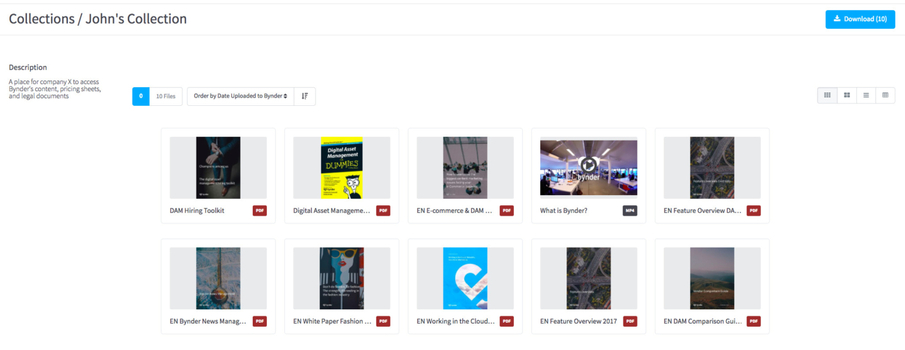



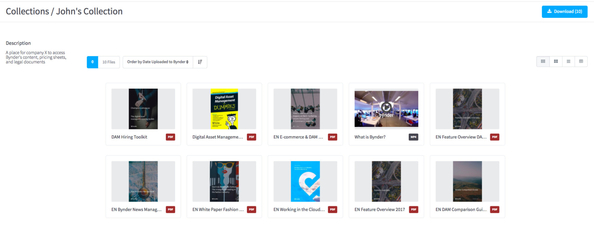
3. Partnerships and agency collaboration
In 2020, no tech company exists on an island. Technology partners, commercial partners, and marketing partners collectively form a very interconnected network for a single brand. And that brand’s identity needs to be all over that network and consistent on every single channel, elsewise you’re allowing for confusing branding and diluting the recognition you’ve worked so hard to generate.
All brand identity elements should be easily accessible to that entire network, and this can happen in 2 ways.
1. The traditional way: internal marketers in charge of the brand can find and share all approved assets instantly within the DAM.
2. The new way: dynamic brand guidelines allows anyone with the right permission to download all brand assets such as logos and fonts with context (how to use, how not to use).
Tip: For a good example of dynamic brand guidelines, visit Facebook’s Brand Resource Center at https://www.facebook.com/brand/resources or check out the OnBrand Conference brand guidelines. Imagine how difficult it would be if everyone had to email Facebook’s or OnBrand's marketing team every time they needed a logo, versus just downloading the approved ones on these sites.
4. Branding
66% of brands planned to invest more heavily in branded visual content in 2019 - and that number is expected to rise in 2020. All of it needs to be on-brand, whatever that might mean for a given company. Some common branding initiatives that DAM supports can be:
• Events: logos on event collateral, experiential marketing, and branded “swag” items
• Print: brochures, business cards, and documentation
• Employer branding and culture: showcasing how the company culture informs the brand (and vice versa) in order to attract top tech talent
• Channel-ready assets: Automatically generating different sizes and resolutions of assets in order to always fit the dimensions of a social media channel
The challenge specifically for tech companies is dealing with rapid growth and exposure while maintaining efficiency and consistency. Zendesk tackled this head-on - using Bynder to centralize their digital content and create a hub for their brand, called Brandland.
Scaling a brand to new markets and on new channels requires a level of operational efficiency that doesn’t always come easy to tech companies. DAM helps introduce that structure to content usage and information management for marketing.
Tip: Tagging assets to different uses and departments will help all team members better navigate the DAM and understand how assets should be used. For instance, tagging a new upload of photos to “culture” will help the HR and recruitment teams find them when needed.
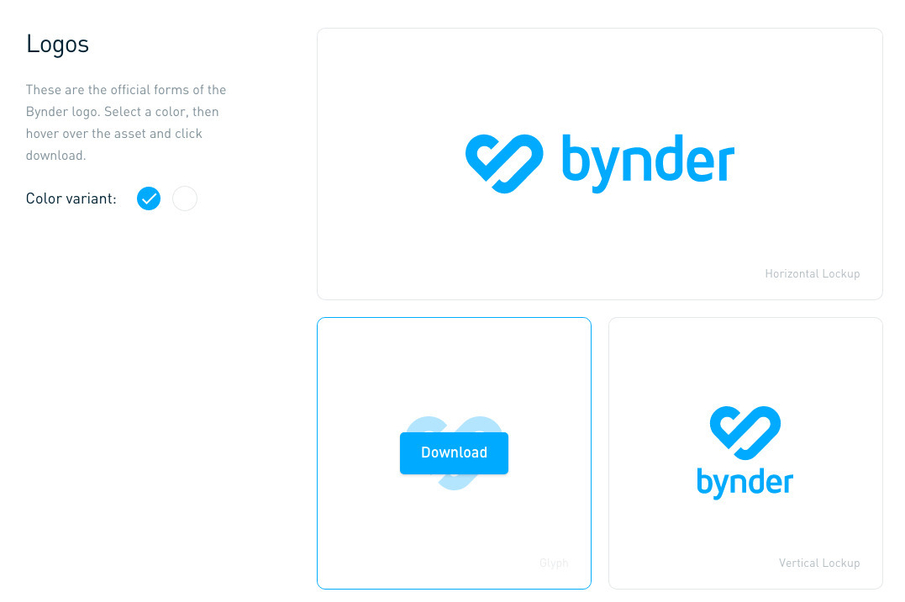

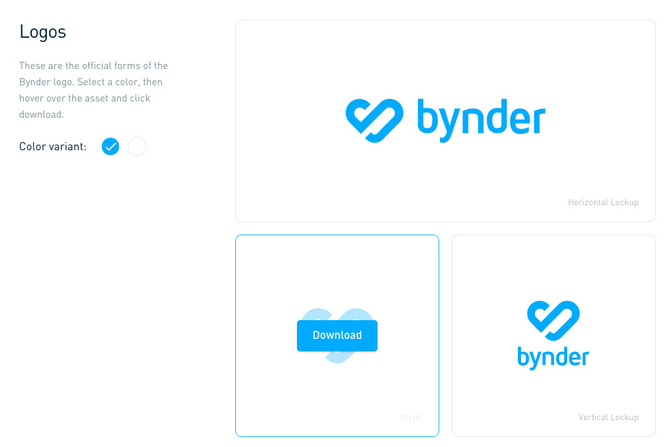
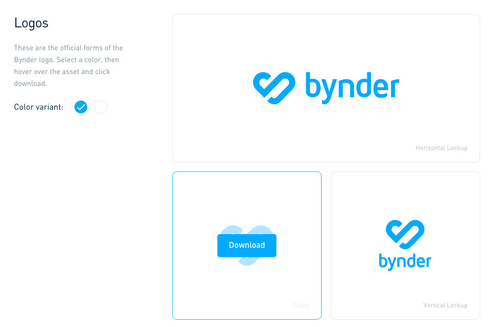
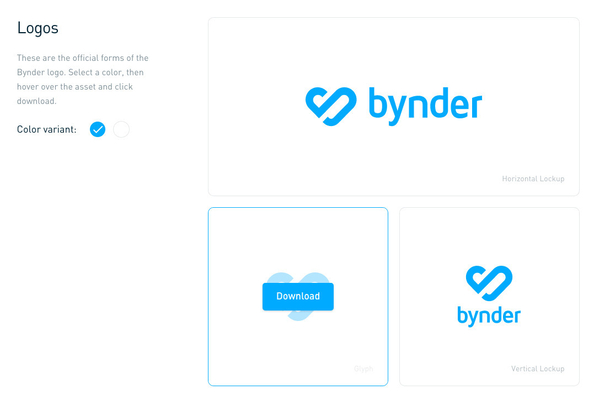
5. Knowledge sharing
Knowledge sharing simply means facilitating more access to the content that too often stays in siloes. Anytime someone at a tech company utters the phrase “I have no insight into that”, it’s an indicator that perhaps there could be greater exchange of knowledge. A tech company is likely to have a more fluid structure than a traditional corporation, and while that’s typically advantageous, it could also mean that there’s less protocol for where to find or share information between teams, departments, or offices. That information can include:
- Templates
- Product roadmap
- Presentations and best practices
- Company numbers
Tip: Customizing homepage sliders and links to the most popular requests will help optimize the DAM experience for every single team member and further increase knowledge sharing.
If you've made it this far, we hope you found what you read helpful! You work at a tech company, so you know the drill: if it sounds like DAM could be a real difference-maker at your organization, definitely try it out with a Bynder trial below or by learning more from our Digital asset management comparison guide.












